Part II: the Claremont Church
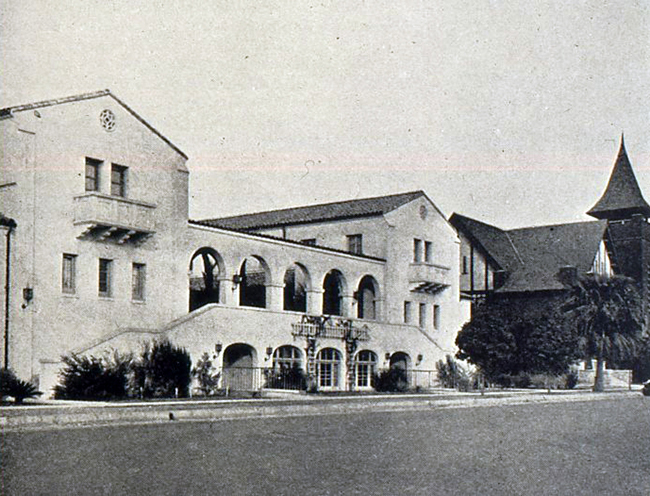
Guildhall shortly after construction was completed in 1927, with the original Claremont Church in the background. Photo/courtesy of Claremont Heritage
by John Neiuber | Special to the Courier
In part two, we continue to explore the architecture of Claremont United Church of Christ, some of the people associated with it, and the initiatives that contribute to its historical significance.
Another historic resource on the CUCC campus is the Guildhall. The Spanish Revival style structure, designed by architects David C. and J.E. Allison, was built in 1927. It was constructed during the same era as other notable Spanish style buildings such as the Garner House, and shares many of the design elements found in those buildings and others of the genre in Claremont.
The reinforced concrete building features arches, stucco walls, balconies with decorative supports, deep set windows, some set into an arch detail, gabled clay tile roof, decorative gable vents, a courtyard, and a tower. The Guildhall is a fine example of a Spanish Revival building that remains largely intact and contributes to the architectural history of the site and the city.
Kingman Chapel, at the corner of Harrison and Harvard avenues, was designed by Theodore Criley and Fred McDowell to complement the 1955 sanctuary and was built by C. William LeGrand in 1963, on the site of the original 1906 church. It is another fine example of modern architecture and pays homage to the original church with its use of rock work, and to the Guildhall and sanctuary with its tile roof.
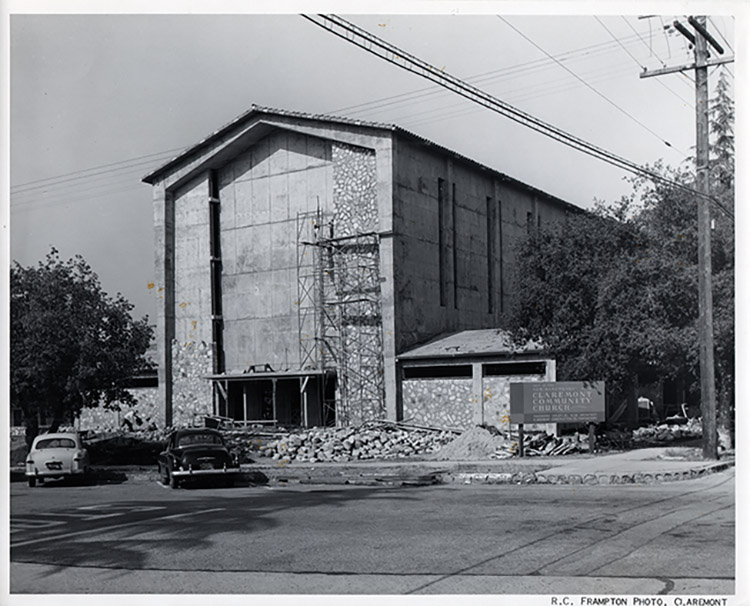
Claremont United Church of Christ’s Theodore Criley designed sanctuary, seen here under construction in 1955, utilized local rocks both to pay homage to the original edifice, and because “Claremont potatoes” were abundant. Photo/courtesy of Claremont Heritage
To the west of the Guildhall across the parking lot is a small, simple house built in 1902 that now houses the early childhood center of the church. Built in 1902, this was the house of Phebe Estelle Spalding. A graduate of Carleton College, where she was known as the “queen of books,” she arrived to teach literature at Pomona College in 1889, the first woman on the faculty. Strong, determined, intellectual, inspirational, aspirational, and prolific, Spalding was one of the school’s most respected and revered faculty members. When the first two chairs were endowed at Pomona, one of those went to Spalding in 1911.
Known as a member of Pomona’s “old guard,” which included Charles Burt Sumner, Edwin Norton, Frank Brackett, Daniel Colcord, Arthur Bissell, George Hitchcock, and George Sumner, Spalding was one of only two with an earned doctorate degree. She was also the only one to publish in professional journals. She was a published poet and wrote 13 books, which represent some of the finest Arts and Crafts book making of the era.
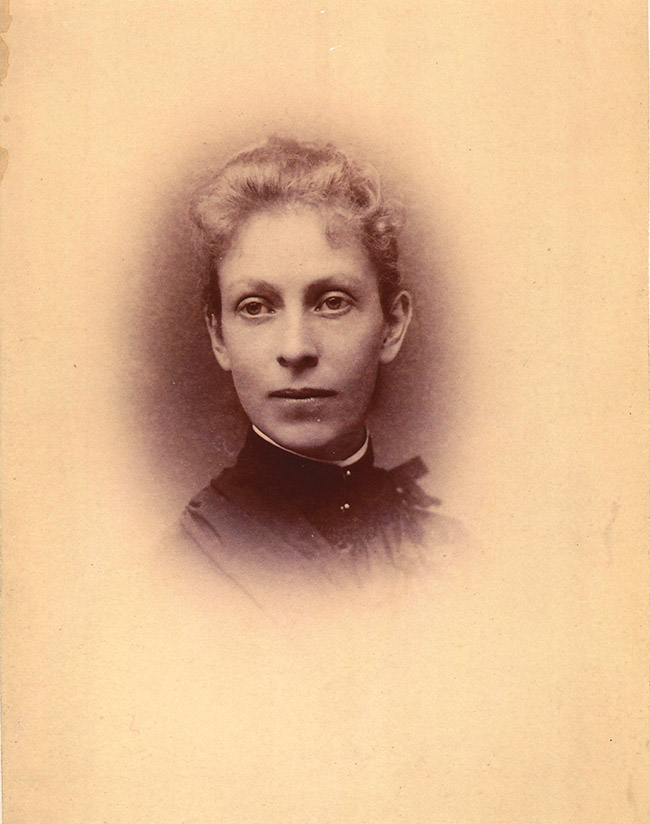
Phebe Estelle Spalding, whose house is now Claremont United Church of Christ’s Early Childhood Center. Photo/courtesy of Claremont Heritage
Spalding was very involved at the college. She was one of the founders of the Rembrandt Club, helped to secure books so that when the Carnegie Library opened it had 15,000 volumes, and she hosted teas and talks at her house which became known to her students as “otherwhere.” Ever self-effacing, when she retired, she did so quietly, without fanfare or feting. It was the same when she died; she requested there be no public funeral. Being a member of the Claremont Church, she requested a verse she penned be printed in the weekly program, which speaks volumes of her intellectual insight that the more one learns, the more one realizes what one does not know:
“Let the thick curtain fall
I better know than all
How little I have gained
How vast the unattained.”
Judy Wright, in “Claremont, A Pictorial History,” wrote, “The church has had profound social and political influence over Claremont.” The first town meetings were initiated by church leadership. The formation of Pilgrim Place, Mt. San Antonio Gardens, Oak Park Cemetery, Su Casa, East Barrio Social Hall, the public library, Casa Colina, and Pomona Valley Hospital Medical Center all had roots in the Claremont Church.
One of the most important endeavors was the formation of the intercultural council, which was established in 1947 as an outgrowth of the church’s social action committee. Under the leadership of Ruth Ordway, the council raised funds to purchase and develop 2 ½-acres of land at First and Brooks streets. The project, called “Neighbors, Inc.,” became a model of intercultural living and cooperation. It consisted of 12 houses and was the first time minority families were homeowners in Claremont, with six Mexican American families, five white families, and one Black family moved in beginning in 1948. A full 21 years before the Fair Housing Act, the intercultural council began the first integrated neighborhood in Claremont.
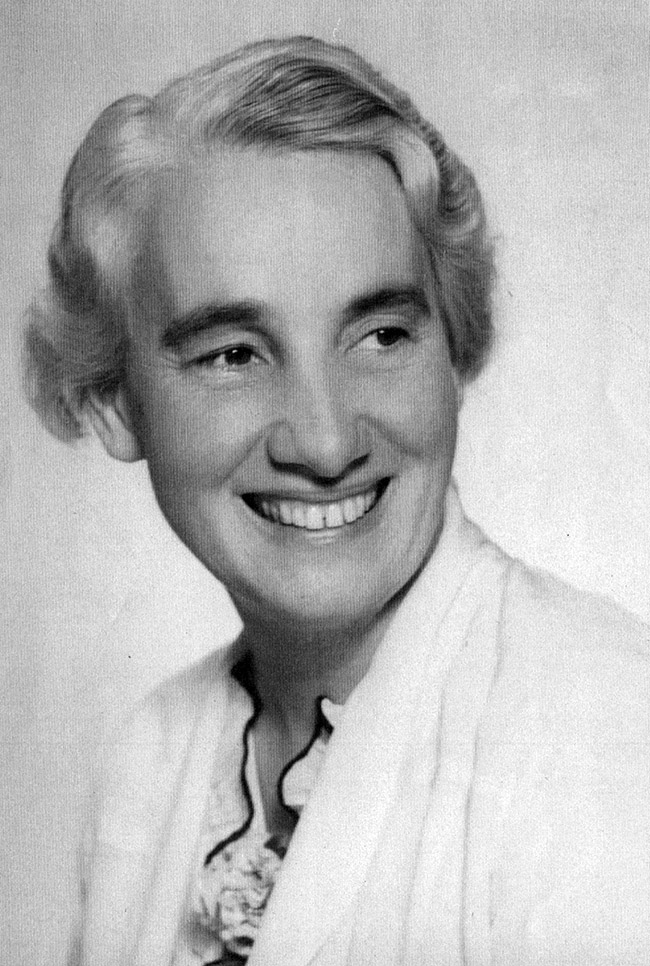
Ruth Ordway headed up the Claremont Church’s Intercultural Council, which brought integrated housing to Claremont. Photo/courtesy of Claremont Heritage
The church is also the repository of extensive archives that could yet yield important information about the history of Claremont. A thorough examination and preservation of the archives is warranted.
It is difficult to find a site and institution that has had a more historic impact on the establishment and growth of the city than CUCC. It is worthy of preservation, restoration where changed, and nomination to the National Register of Historic Places.





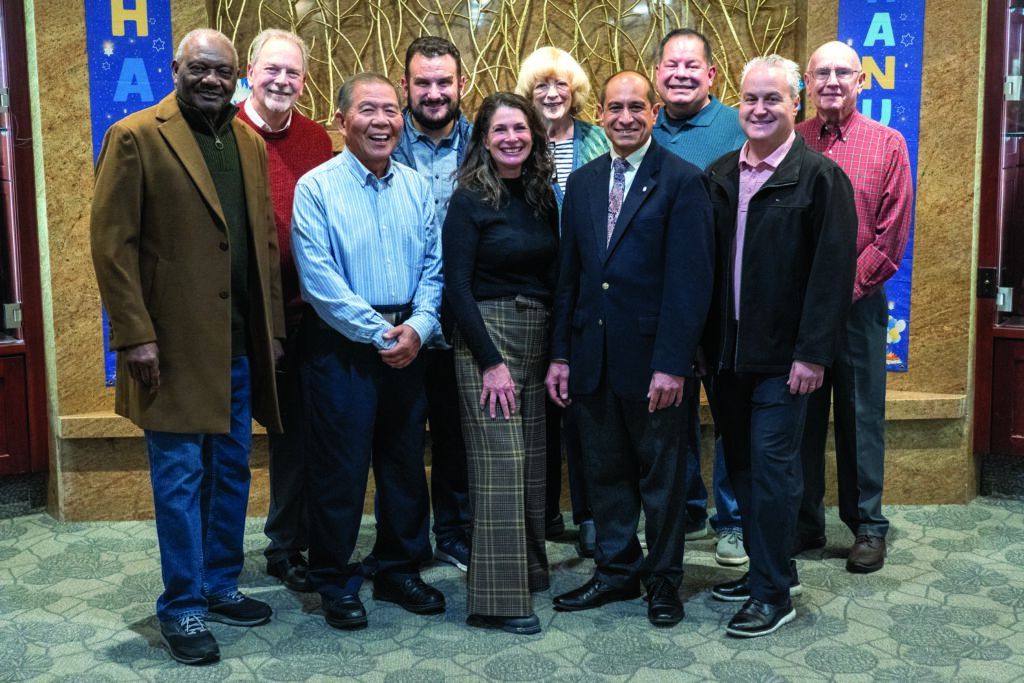
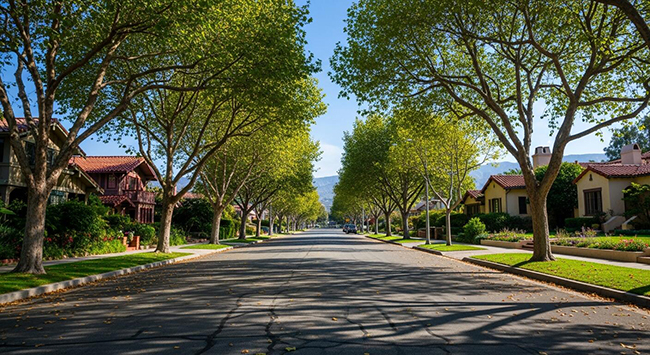
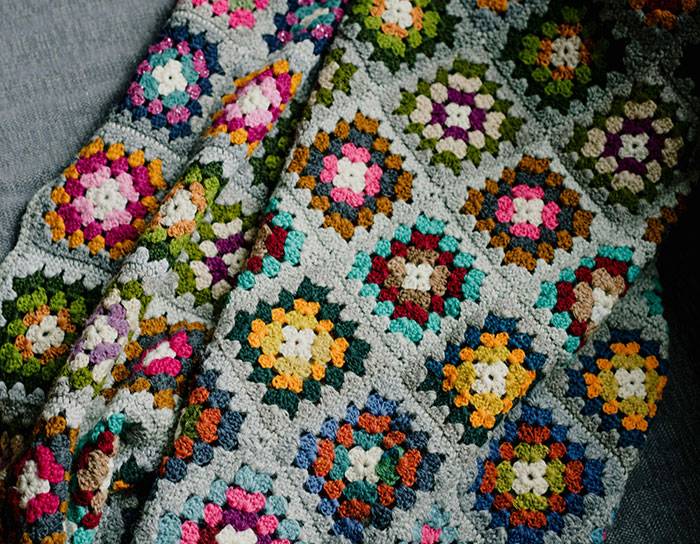
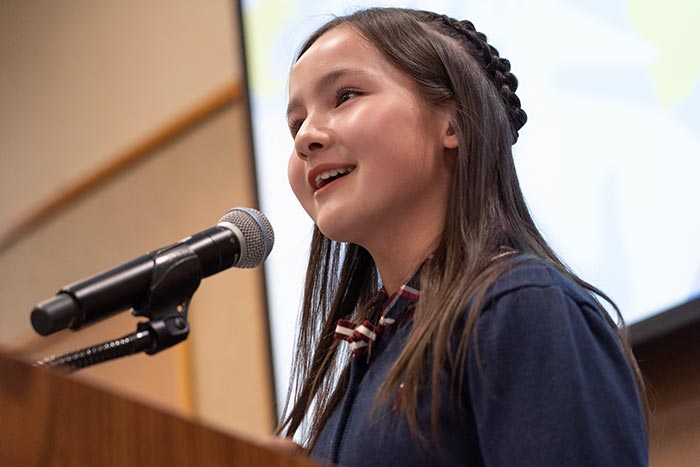

0 Comments